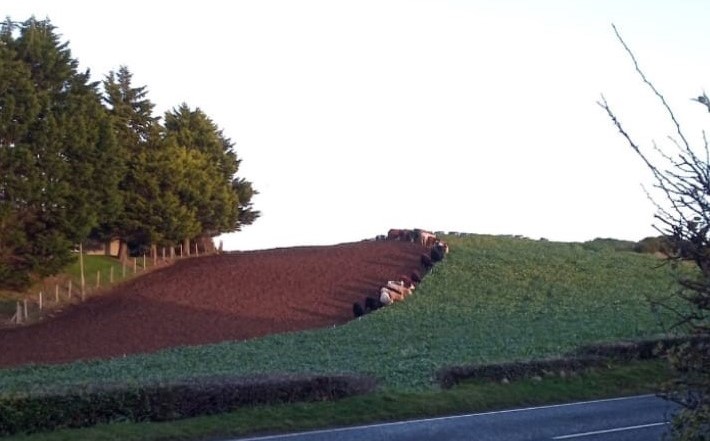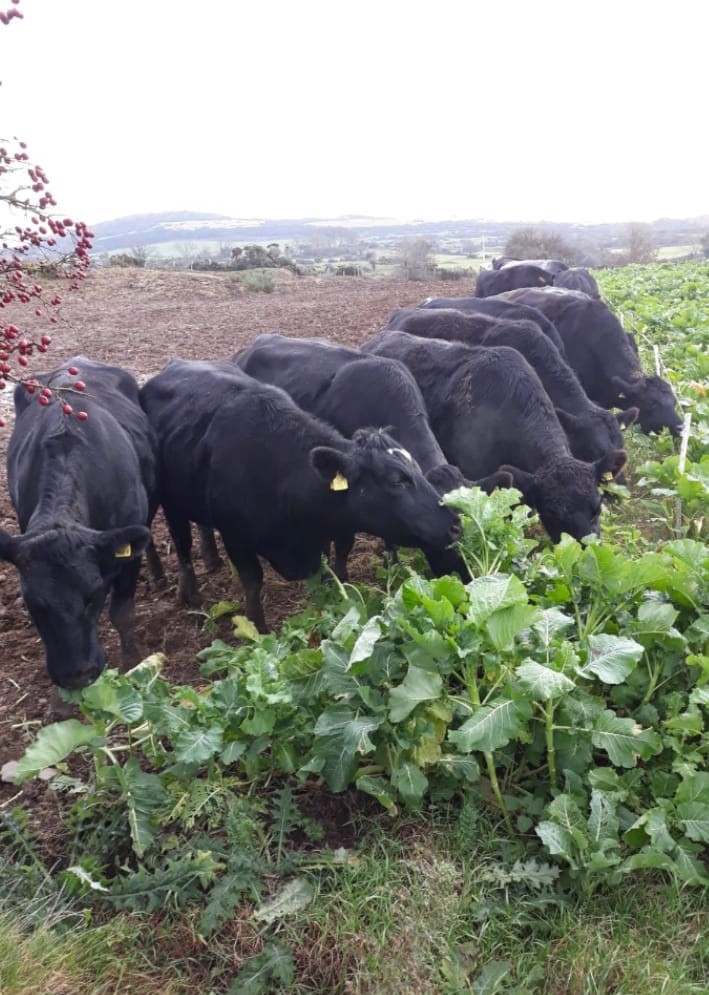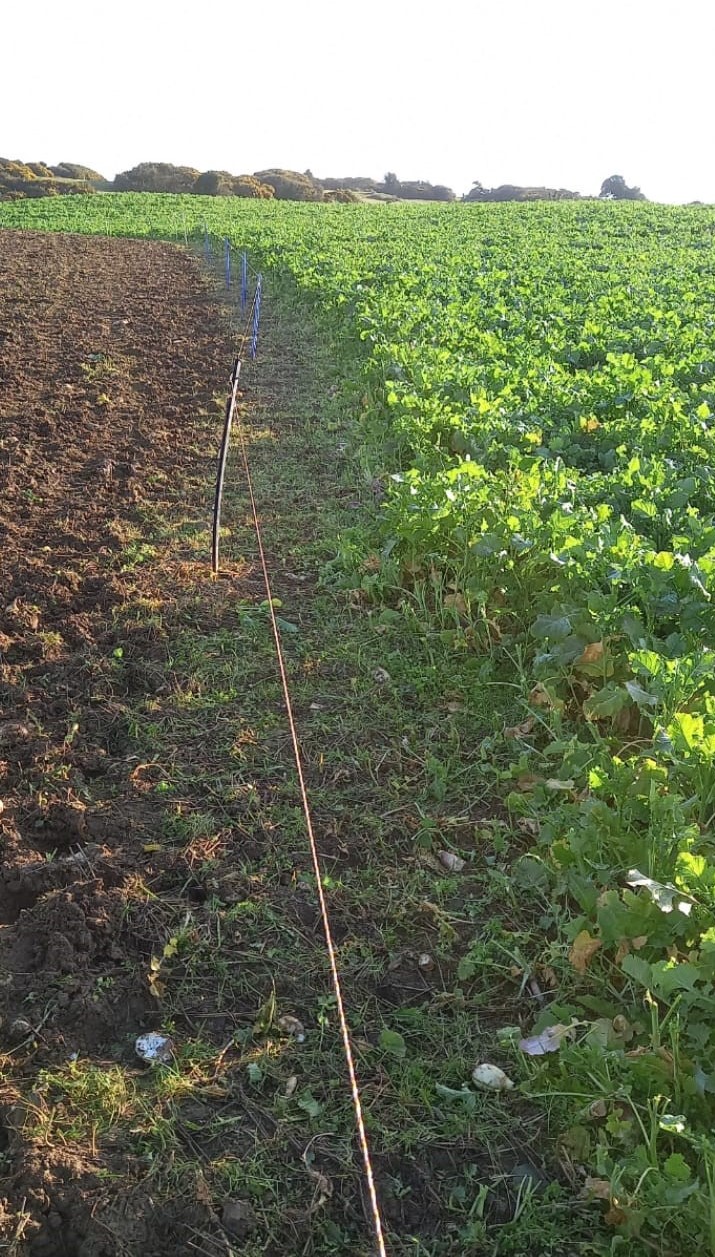The option of brassicas and forage crops
June 8, 2022
Historically for many, growing brassicas and forage crops may not have been high on the agenda as a livestock feed. Suitable land type, local weather conditions and current crop rotation on the farm should all be taken into account and for many these were the main deterrents. However with the current price rise in Feed, Fuel & Fertiliser, many are now thinking this could be an option for 2022 according to Dominic Mason, CAFRE Beef & Sheep Adviser.
Recent surveys carried out by CAFRE, UFU and AgriSearch suggested that farmers were planning to reduce fertiliser input, improve grassland management and maintain stocking levels. In some cases improvements in grassland management may not be enough to make up the deficit left by reduced fertiliser inputs, especially when it comes to winter fodder.
This, according to Dominic leads farmers to the question – what alternatives are there to grass and silage to reduce any potential forage gap?
What are the options and what can they offer?
Brassicas and forage crops present many benefits, from lowering costs through to reduced reliance on purchased feeds. They have the ability, if managed correctly, to yield well, provide a good source of crude protein (CP) and metabolisable energy (ME).
Another advantage of brassicas and forage crops is that they will fit into a crop rotation/grassland renewal program providing Summer/Autumn and Winter grazing at a time when grass growth/silage stocks can be limited or under pressure. They can be grazed in situ reducing the need for housing and thus greatly reducing bedding and labour costs. The manure produced, is returned directly to the ground adding high value organic matter and nutrients for the next crop to be grown.
There are many questions to consider before you decide to grow forage crops. The final decision of choosing the correct crop is based on the answers to a few simple questions:
- Is the land suitable to grow and graze forage crops?
- When do you plan to graze the crop?
- When will the land for the potential crop become free for cultivation and sowing?
- Do you intend to sow a leafy crop such as forage rape or a root crop such as fodder beet?
- What type of stock and how many do you plan to graze on the crop?
Table 1: Forage crops chart indicating sowing period, nutritional value and utilisation period
| Crop | Sowing Time | Fresh Yield Tonnes/Ha | Dry Matter (%) | Crude Protein % | D Value | Metabolisable Energy (ME) MJ/kg/DM | Utilisation Period |
|---|---|---|---|---|---|---|---|
| Fodder Beet | March – Early May | 80-90 | 15-23 | 12-13 | 78 | 12.5-13.5 | October – March |
| Kale | April – June | 60-70 | 14-16 | 16-17 | 70-75 | 10-11 | October – March |
| Stubble Turnip | April – August | 40-45 | 8-9 | 17-18 | 68-70 | 11 | September – February |
| Rape & Hybrids | May – August | 23-35 | 12-13 | 19-20 | 65 | 10-11 | October – December |
| Swedes | April – June | 70-90 | 10-13 | 10-11 | 82 | 12.8-13.1 | October – March |
Crop establishment
Where to sow
- These crops can thrive on a variety of soil types but it is best that you always consider the environmental constraints. Select ground which would be free draining, not heavy ground as this can prove to be problematic come the time of grazing ing or harvesting.
- As with grass, a soil pH of 6.0-6.5 is ideal
- Consider flatter fields if possible as this can prevent run off in wet conditions.
- Allow for a run back area onto grassland when sowing which will allow the stock to access water, roughage, minerals and dry lying conditions.
Seedbed and sowing methods
- Within grassland where a full cultivation with a plough and further cultivations are required aim to produce a fine, firm, level seedbed.
- Many of these crops are suitable to be direct drilled straight into stubble following an arable crop with minimal cultivation being required.
- In all instances it is vital not to loose soil moisture content so the timing of cultivation, sowing and rolling to consolidate the seedbed once sown are key to avoid loosing soil moisture.
Fertiliser/nutrient requirements
- The majority of these crops will thrive well when provided with plenty of organic farm yard manure or slurry.
- Dependant on crop sown, the P & K supplied from adequate volumes of organic manure may fullfill all the requirements with only a top dresing of N being required 3-4 weeks after sowing to boost crop growth.
- Specific nutrient management planning will depend on the crop and advice should be taken on this.
Weed and pest control
- Dependant on crop, sowing method and cropping history the land may need to be sprayed with a systemic broad spectrum glyphosate based herbicide to control broad leaved weeds prior to sowing. Always consult a BASIS accredited agronomist on herbicide use.
- For some crops dry growing conditions can lead to problems with flea beetles. It is reccomended that crops are monitored and treated seed is used if they are expected to be an issue
- Slugs can also be a threat especially if the crops are direct drilled. Slug pellets should be considered.
- Grazing pigeons can be problematic at the crop establishment stage.
- Always choose a variety with good disease resistance.
Feeding guidelines
- Livestock should be introduced gradually to the crop, ideally over a 2 week period.
- As mentioned previously allow for a runback area within the crop so as the stock can access water, silage or hay (30% of diet) and high quality minerals.
- All stock that are grazing on the crops should be vaccinated for soil borne clostridial diseases such as blackleg prior to being introduced to it.
Table 2: Forage crop qualities
| Forage Crop | Crop Information |
| Leafy Crops | |
| Kale | High yielding (8-10 tonnes DM/ha)Can utilise through the winter monthsHigh protein with good energy contentSlower growing, utilise within 22-30 weeksSowing rate direct drill at 1.5-2 kg/ac and broadcast at 3kg/ac |
| Rape & Hybrids | Lower yielding than Kale (3.5-4 tonnes DM/ha)Suitable for main crop/catch crop. Summer, Autumn & Winter grazingHigh protein with good energy contentFast growing, utilise within 10-12 weeksSowing rate direct drill 2.5kg/ac and broadcast at 4kg/ac |
| Root Crops | |
| Stubble Turnip | Yields 3.5-5 tonnes DM/haSuitable for main crop or catch cropProtein held within the leaves and energy held within the root/tuberFast growing, utilise within 10-13 weeksSowing rate direct drill 2 kg/ac and broadcast 3kg/ac. |
| Swedes | High yielding (7-10 tonnes DM/ha)Good protein with high energy contentCan be grazed in situ or harvested, cleaned and stored in yardLonger growing, utilise within 25-30 weeksSowing rate direct drill 1 kg/ac and broadcast 2 kg/ac |
| Fodder Beet | High yielding (15-17 tonnes DM/ha)Good replacement for cereals in the diet with high energy contentVery palatable. Can be grazed in situ or harvested, cleaned and stored in yardLonger growing, utilise within 25-30 weeksSowing rate direct drill 50,000 seeds/ac (seeds sold in 1 acre packs of 50,000 seed) |
Irrespective of what your fodder plans are it is essential to complete a fodder budget and assess how much silage is on farm after 1st cut. From that you can then calculate how much silage is required for the stock, consider the yields expected from 2nd and 3rd cuts and then determine whether your silage supply will meet demand over the winter months. For further information contact, your local CAFRE Beef and Sheep Adviser for guidance and advice.



